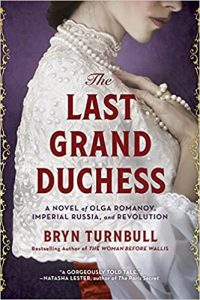Bryn Turnbull: On Fountainpens
 Recently, I attended an educational seminar about the merits of social media. Having some proficiency in the use of Instagram, I decided to attend in the hopes of brushing up my skills – however, what followed was an hour-long confirmation of my own obsolescence.
Recently, I attended an educational seminar about the merits of social media. Having some proficiency in the use of Instagram, I decided to attend in the hopes of brushing up my skills – however, what followed was an hour-long confirmation of my own obsolescence.
“It’s easy!” the moderator said while discussing the difference between Instagram reels and TikTok videos. “All you need is a ring-light, an account, and a phone!”
I’ve long been hearing about the fall of the millennial empire: the generation that saw the dawn of the internet era, who remember receiving our first cellphones with the same eager anticipation as passing our driver’s tests, our elastic little minds making us easily adapt to computers in the classroom and in our parents’ basements. “It’s easy!” we’d chirp, rolling our eyes at our parents’ inability to code an excel spreadsheet. “All you need is a laptop, an email address, and a wifi router!”
The pace of technology no longer moves at millennial speed – and I must confess, even that felt a little too brisk for my liking. These days my 33-year-old brain can hardly keep up with the social media platform du jour; I’ve made my meagre attempts at TikTok fame with no understanding of how to splice videos together (“It’s so intuitive!”) and I can’t quite figure out the difference between a reel and a story.
I sound like a curmudgeon, don’t I – but isn’t that the fate of all those left behind by technology? The fountain pen was once newfangled, too: if I’d lived during its advent, no doubt I’d be trimming my quill and turning up my nose, archly declaring, “It will never last.”
And yet there’s something about fountain pens that speaks to their permanence: perhaps it’s the fact that, unlike their ballpoint cousins, they don’t end up in landfills after a single use. I’ve collected fountain pens since I was in high school, when, on an exchange to France I found they were the classroom norm. I suspected that they accounted for the impeccable penmanship of my French peers, including the swan-dive tails on their numbers that made math aesthetically pleasing, if not enjoyable. On my return to Canada, my parents bought me a thick-barreled Waterman made of marbled resin; from there, the obsession grew.
Part of the lure of a fountain pen lies in their look: just holding one makes you feel as though what you’re planning to write is of importance, even if it’s only a grocery list. As someone who writes her books longhand before transferring them to the computer, I also find it to be a way of connecting to a different part of my brain – a more intuitive part, perhaps, which allows me to access my characters’ emotions. When I move what I’ve written to the computer, it gives me an additional chance to tweak the logistical side of things: how the scene looks; how the characters move. But it all starts at the emotional level: with a pen in hand, poised over thick paper, ink ready to spill across the page.
No two fountain pens are alike. The balance of the pen in your hand, the way the cap posts, and the way the ink flows all factor into its use: whether it’s a daily workhorse or for special occasions. That handsome Waterman, with its heavy nib and wide barrel, is too austere for daily writing. I save it for letters and book signings, where that beautifully marbled resin suits the luxury of the task at hand.
For day-to-day work I prefer smaller pens: my burgundy LAMY Safari, bought at JFK Airport after a trip to see my publisher; or my current favourite, a slender neon yellow Caran d’Ache, its hexagonal body ideal for a long day of writing. Each pen, too, has its memories: I bought the Caran d’Ache on the day I signed my first book deal, at a beautiful local stationary store that treats its fountain pens like Ollivander treats wands. My jazzy gold Sigma used to reside in my handbag, looking like the stationary equivalent of a drug deal before age caught up with it – it no longer caps, and the ink dries out too fast, but boy, does it have style. My silver and white Parker, with its cap etched like owl’s feathers, arrived on the day my first book came out – a gift from my parents, who have subsequently fallen victim to the habit and have started their own collections.
At the end of the day, fountain pens require that little bit of extra effort, and in return, they bring a little bit of extra luxury to the art of writing. To my curmudgeonly mind, that’s why they endure: they bring a moment of analog peace, in a digital world.
—
When she was eleven years old, Bryn Turnbull accidentally put her foot through a single-pane window while leafing through a well-worn copy of Sandman (Volume 2). The incident, which resulted in a trip to the hospital, five stitches, and a unique application of superglue, taught her two things: one, that reading is not, and should not be attempted as, a full-contact sport; and two, that writers can create worlds within a book so absorbing, so completely and utterly all-encompassing, that they can drive readers to such distraction as to forget the outside world entirely.
Today, Bryn is a writer of historical fiction. Equipped with a Master of Letters in Creative Writing from the University of St. Andrews and a Bachelor’s degree in English Literature from McGill University, Bryn, who resides in Toronto, writes books intended to drive readers to similar levels of distraction – to transport them into different eras and different worlds, but hopefully not into the hospital.
With a penchant for fountain pens that leak ink onto her fingers, antique furniture, and traveling, Bryn is, admittedly, an old soul with limited patience for modern conveniences – but if you want to get in touch with her, email – that most ancient of online technologies – is the best way to do it.
Bryn is represented by Kevan Lyon of the Marsal Lyon Literary Agency. Her debut novel, The Woman Before Wallis, was released by Mira on July 21, 2020, and became a Canadian bestseller.
Found out more about Bryn on her website https://www.brynturnbull.com/
Twitter @brynturnbull
THE LAST GRAND DUCHESS
 “Powerful and haunting . . . an intimate and unforgettable tale that transports the reader to the heart of Imperial Russia.” —Chanel Cleeton, New York Times bestselling author of The Most Beautiful Girl in Cuba
“Powerful and haunting . . . an intimate and unforgettable tale that transports the reader to the heart of Imperial Russia.” —Chanel Cleeton, New York Times bestselling author of The Most Beautiful Girl in Cuba
This sweeping novel takes readers behind palace walls to see the end of Imperial Russia through the eyes of Olga Nikolaevna Romanov, the first daughter of the last tsar
Grand Duchess Olga Romanov comes of age amid a shifting tide for the great dynasties of Europe. But even as unrest simmers in the capital, Olga is content to live within the confines of the sheltered life her parents have built for her and her three sisters: hiding from the world on account of their mother’s ill health, their brother Alexei’s secret affliction, and rising controversy over Father Grigori Rasputin, the priest on whom the tsarina has come to rely. Olga’s only escape from the seclusion of Alexander Palace comes from the grand tea parties her aunt hosts amid the shadow court of Saint Petersburg—a world of opulent ballrooms, scandalous flirtation, and whispered conversation.
But as war approaches, the palaces of Russia are transformed. Olga and her sisters trade their gowns for nursing habits, assisting in surgeries and tending to the wounded bodies and minds of Russia’s military officers. As troubling rumors about her parents trickle in from the front, Olga dares to hope that a budding romance might survive whatever the future may hold. But when tensions run high and supplies run low, the controversy over Rasputin grows into fiery protest, and calls for revolution threaten to end three hundred years of Romanov rule.
At turns glittering and harrowing, The Last Grand Duchess is a story about dynasty, duty, and love, but above all, it’s the story of a family who would choose devotion to each other over everything—including their lives.
Looking for more historical fiction from Bryn Turnbull? Don’t miss The Woman Before Wallis. For fans of The Paris Wife and The Crown, this stunning novel tells the true story of the American divorcée who captured Prince Edward’s heart before he abdicated his throne for Wallis Simpson.
BUY HERE
Category: How To and Tips






























